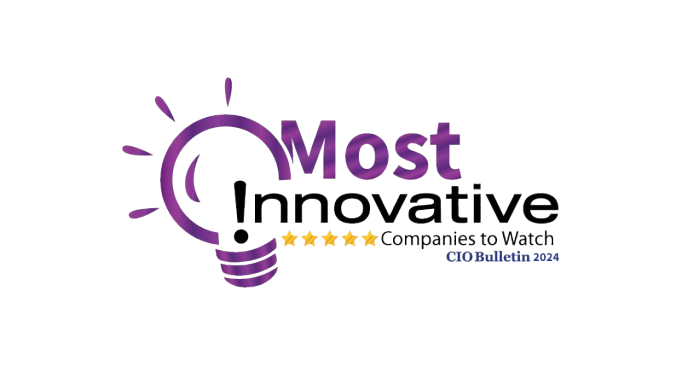Seamless Collaboration: Best Practices for Salesforce-HubSpot Integration
May 31, 2023
Integrating two powerful platforms like Salesforce, a leading CRM, and HubSpot, a comprehensive marketing automation platform, can unlock numerous benefits for businesses. The Salesforce-HubSpot integration streamlines workflows, aligns sales and marketing efforts, and enhances data visibility. In this blog post, we will explore best practices for integrating Salesforce and HubSpot, enabling businesses to maximize the value of both platforms and drive growth.
Define Data Sync Rules
Before setting up the integration, establish clear guidelines for data synchronization between Salesforce and HubSpot. Determine which data fields should be synced, such as contact information, opportunities, or lead status. Define rules for data updates, ensuring that changes made in one platform are reflected accurately in the other. Consistency and accuracy in data synchronization lay the foundation for effective collaboration.
Establish Naming Conventions Maintain consistency in naming conventions across both platforms to avoid confusion and ensure accurate data mapping. Establish guidelines for naming contacts, accounts, opportunities, and other key records. Consistent naming conventions facilitate easier data matching during the integration process and provide a cohesive experience for users across Salesforce and HubSpot.
Align Sales and Marketing Processes The integration between Salesforce and HubSpot presents an opportunity to align sales and marketing processes effectively. Encourage open communication between teams to establish shared goals, processes, and metrics. Define lead handoff criteria, ensuring that marketing-qualified leads seamlessly transition into Salesforce as sales-ready leads. Regular collaboration and alignment foster a more efficient and unified approach to driving revenue.
Develop Lead Scoring Criteria Work collaboratively to define lead scoring criteria that consider both sales and marketing perspectives. Utilize Salesforce's lead scoring capabilities and HubSpot's lead intelligence to assign scores based on factors such as engagement, demographics, and firmographics. This shared scoring system ensures that leads are properly prioritized, enabling sales teams to focus their efforts on high-value opportunities.
Enable Closed-Loop Reporting Implement closed-loop reporting to measure the impact of marketing efforts on revenue generated in Salesforce. Utilize HubSpot's attribution reporting and Salesforce's reporting capabilities to track marketing campaigns, opportunities, and closed deals. Closed-loop reporting provides valuable insights into the effectiveness of marketing initiatives, enabling data-driven decision-making and optimization.
Implement Data Security Measures Data security is paramount when integrating Salesforce and HubSpot. Ensure that appropriate access controls and permissions are in place to protect sensitive customer data. Establish protocols for data backups, user authentication, and data encryption. Regularly review and update security settings to stay compliant with industry regulations and maintain customer trust.
Provide Training and Support Offer comprehensive training and support to users across both platforms. Educate sales and marketing teams on the benefits and functionalities of the integrated system. Provide resources, documentation, and training sessions to help users leverage the integration effectively. Ongoing support ensures that teams are empowered to make the most of the integrated Salesforce-HubSpot environment.
Conclusion By following these best practices, businesses can unlock the full potential of the Salesforce-HubSpot integration. Aligning data sync rules, establishing naming conventions, aligning sales and marketing processes, developing lead scoring criteria, enabling closed-loop reporting, implementing data security measures, and providing comprehensive training and support contribute to a seamless and efficient integration. With Salesforce and HubSpot working harmoniously, businesses can achieve streamlined operations, improved collaboration, and accelerated growth.
Establish Naming Conventions Maintain consistency in naming conventions across both platforms to avoid confusion and ensure accurate data mapping. Establish guidelines for naming contacts, accounts, opportunities, and other key records. Consistent naming conventions facilitate easier data matching during the integration process and provide a cohesive experience for users across Salesforce and HubSpot.
Align Sales and Marketing Processes The integration between Salesforce and HubSpot presents an opportunity to align sales and marketing processes effectively. Encourage open communication between teams to establish shared goals, processes, and metrics. Define lead handoff criteria, ensuring that marketing-qualified leads seamlessly transition into Salesforce as sales-ready leads. Regular collaboration and alignment foster a more efficient and unified approach to driving revenue.
Develop Lead Scoring Criteria Work collaboratively to define lead scoring criteria that consider both sales and marketing perspectives. Utilize Salesforce's lead scoring capabilities and HubSpot's lead intelligence to assign scores based on factors such as engagement, demographics, and firmographics. This shared scoring system ensures that leads are properly prioritized, enabling sales teams to focus their efforts on high-value opportunities.
Enable Closed-Loop Reporting Implement closed-loop reporting to measure the impact of marketing efforts on revenue generated in Salesforce. Utilize HubSpot's attribution reporting and Salesforce's reporting capabilities to track marketing campaigns, opportunities, and closed deals. Closed-loop reporting provides valuable insights into the effectiveness of marketing initiatives, enabling data-driven decision-making and optimization.
Implement Data Security Measures Data security is paramount when integrating Salesforce and HubSpot. Ensure that appropriate access controls and permissions are in place to protect sensitive customer data. Establish protocols for data backups, user authentication, and data encryption. Regularly review and update security settings to stay compliant with industry regulations and maintain customer trust.
Provide Training and Support Offer comprehensive training and support to users across both platforms. Educate sales and marketing teams on the benefits and functionalities of the integrated system. Provide resources, documentation, and training sessions to help users leverage the integration effectively. Ongoing support ensures that teams are empowered to make the most of the integrated Salesforce-HubSpot environment.
Conclusion By following these best practices, businesses can unlock the full potential of the Salesforce-HubSpot integration. Aligning data sync rules, establishing naming conventions, aligning sales and marketing processes, developing lead scoring criteria, enabling closed-loop reporting, implementing data security measures, and providing comprehensive training and support contribute to a seamless and efficient integration. With Salesforce and HubSpot working harmoniously, businesses can achieve streamlined operations, improved collaboration, and accelerated growth.
Featured Resources
Check Our Latest Resources

Proven ROI has been recognized as one of the Most Innovative Companies to Watch 2024 by CIO Bulletin—a testament to the company’s forward-thinking approach to CRM investments and strategic partnerships. By working closely with leading CRM platforms like HubSpot, Proven ROI is revolutionizing how businesses manage customer relationships, scale their operations, and drive growth.



